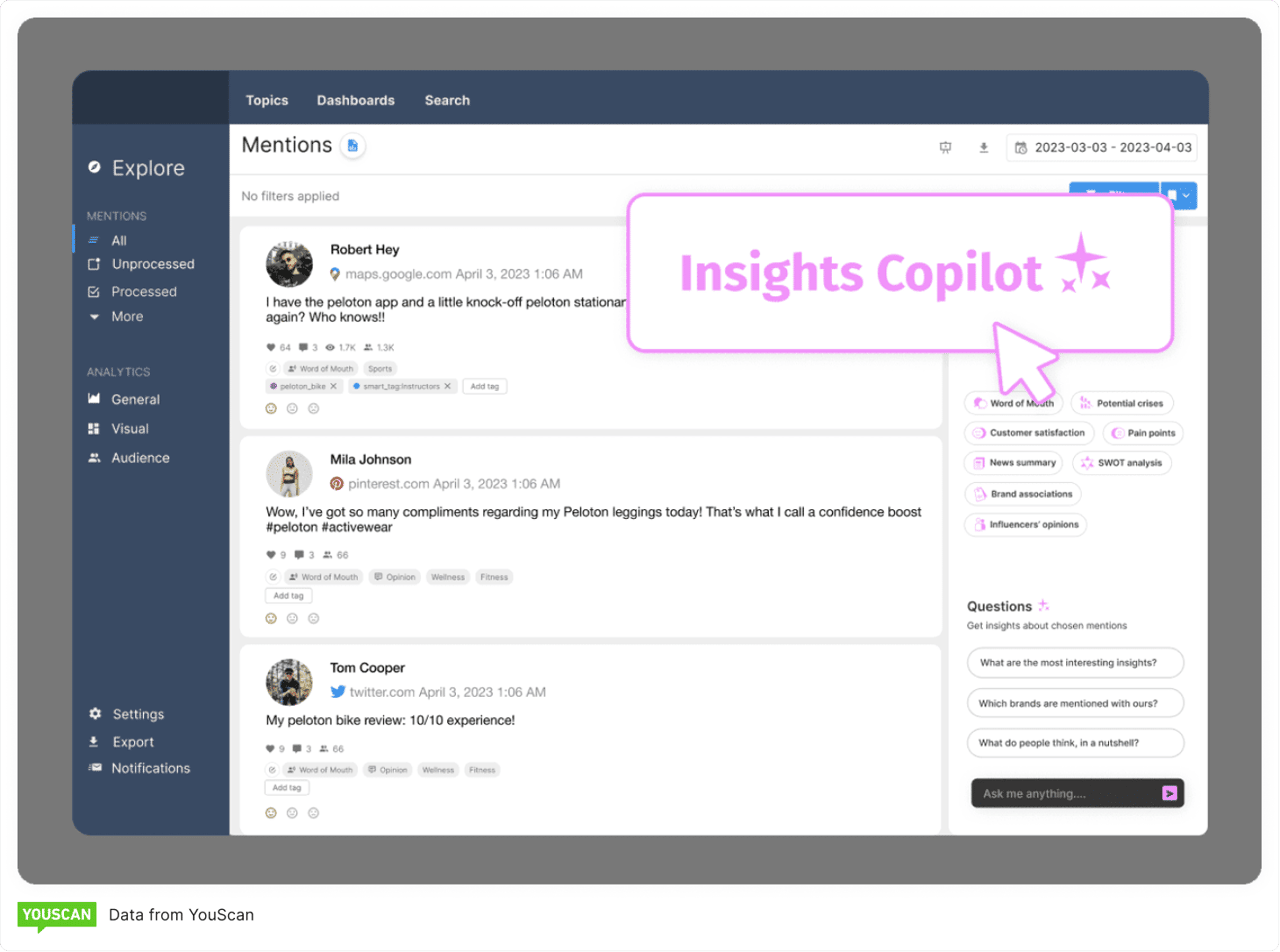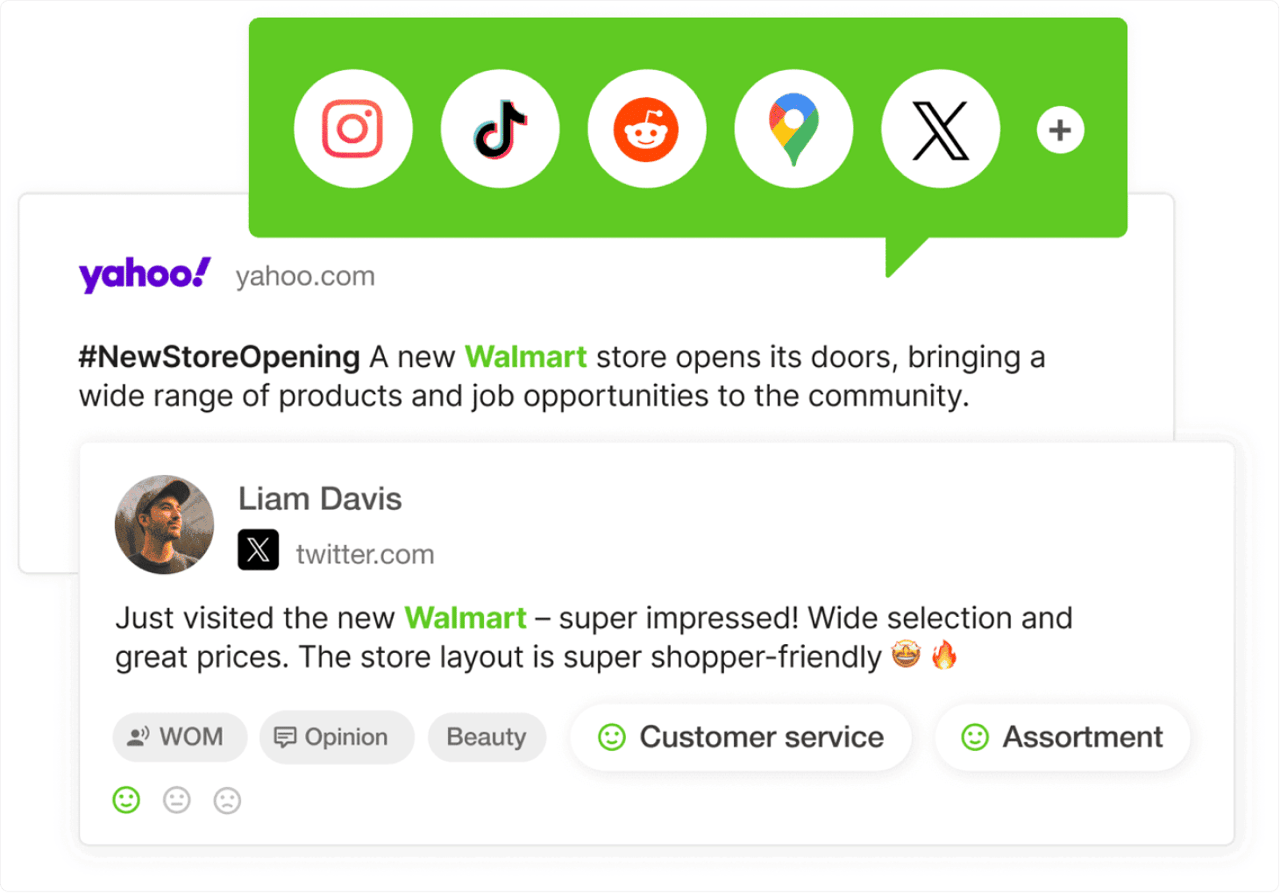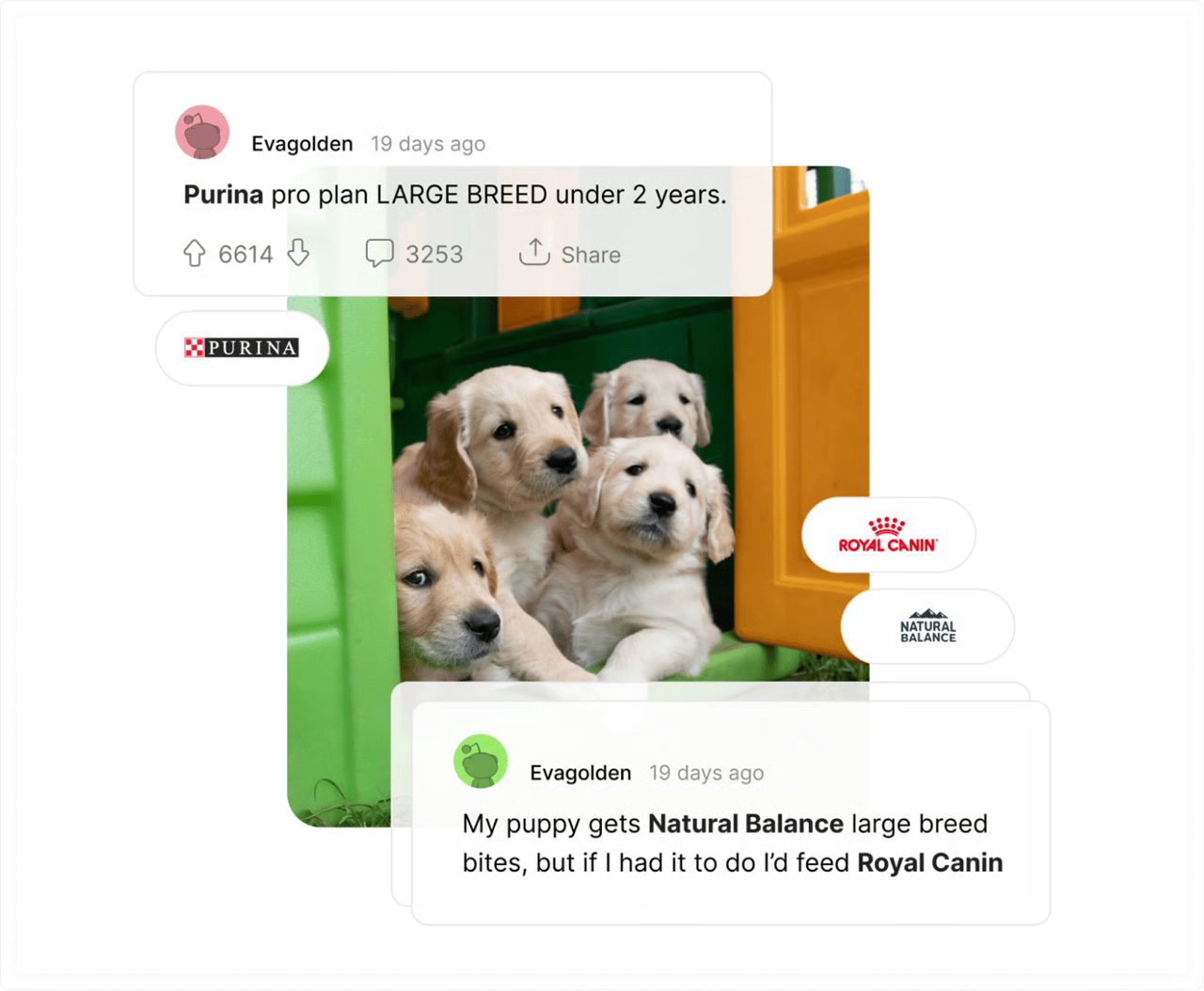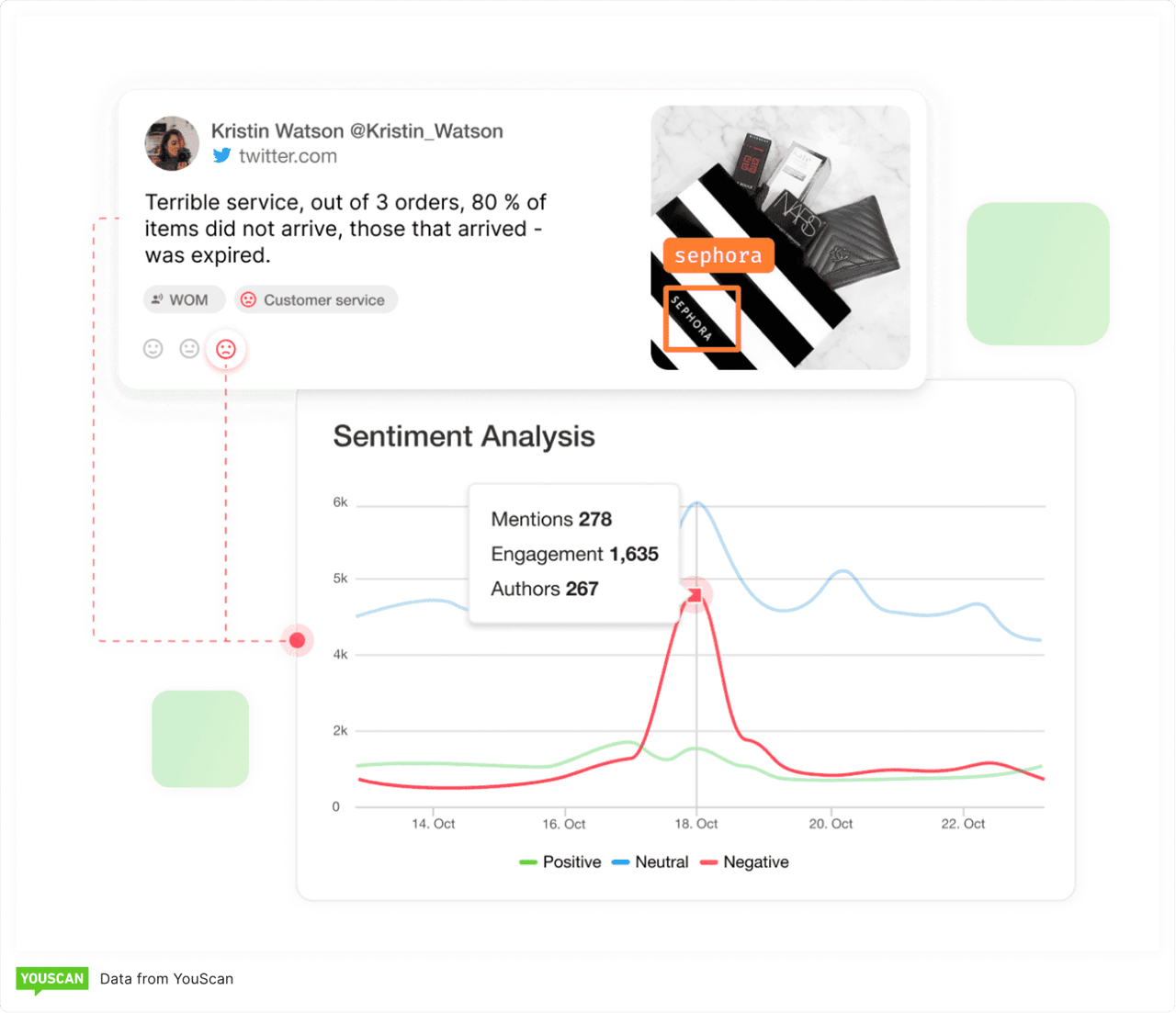Brand Presence: How to Make Your Business Unforgettable

Imagine you're scrolling through your phone when a notification pops up. Your friend just tagged you in a post featuring their favorite coffee brand - not because they're being paid to, but because of their genuine interest in everything about it. The logo, the messaging, the experience. That's brand presence in action.
Statistics show that brand consistency can increase revenue by 10-20%. That’s important for all companies to remember, not just enterprises or franchises.
In this guide, we'll break down exactly what brand presence means, why it's the foundation of lasting business branding success, and how building brand awareness creates the kind of presence that makes your brand unforgettable. You'll learn practical strategies backed by real data, see examples that work, and discover how to measure what matters most.
What is brand presence?
Brand presence is defined as the visibility and memorability of your brand across all the spaces where your target audience spends time. Think of it as your brand's footprint - not just where you show up, but how you connect with your audience
Unlike creating brand awareness, which measures whether people know your name, brand presence goes deeper. It's about being relevant, recognized, and recalled when it matters most. When someone has a problem your business solves, does your brand come to mind first?
Coca-Cola has maintained its brand presence for decades. You don't just see the Coca-Cola logo on billboards. You encounter their consistent messaging in movies, at events, on social media platforms, and in stores. Their visuals remain recognizable while adapting to different contexts. That's presence - being everywhere your audience is, in a way that feels natural.


Source: CNN
Social listening tools like YouScan can help you understand where your brand currently shows up in conversations and identify gaps in your presence strategy.


Source: YouScan
Brand presence operates on multiple levels:
Physical presence (stores, products, packaging)
Digital presence (websites, social media channels, online reviews)
Mental presence (recall, associations, emotions)
Cultural presence (values alignment, community connection)
The strongest brands master all four levels, no matter how customers encounter them.


Why cultivating brand presence matters
A strong brand presence drives results, helps build customer loyalty, and increases brand awareness. When customers recognize and trust your brand, they're more likely to choose you over competing brands, pay premium prices, and recommend you to others.
Research shows that 64% of consumers have tagged a brand or used their hashtag on social media, which shows how brand presence naturally amplifies through customer engagement. But the benefits go far beyond social shares.


Source: TINT
Here's what consistent brand presence strategies deliver:
Brand loyalty increases significantly
When your brand maintains consistent messaging and valuable interactions across channels, customers develop genuine connections. They don't just buy your products - they become advocates who drive word-of-mouth marketing efforts and develop a brand preference for your company.
Purchase decisions happen faster
Customers spend less time researching when they already trust your brand. Your strong presence builds credibility that shortens sales cycles and reduces customer acquisition costs.
Market differentiation becomes automatic
In crowded markets, brand presence creates space between you and competitors. Instead of competing solely on price or features, you win based on overall experience and brand value.
Recovery from challenges improves
Brands with an established presence bounce back faster from negative reviews or PR issues because customers have multiple positive touchpoints to reference.
Want to see how customers really perceive your brand? Brand reputation monitoring reveals what people say when they think you're not listening.


Source: YouScan
Core strategies to strengthen brand presence
Building brand presence requires coordinated effort and strategy across multiple channels, but the foundation remains consistent: authenticity, value, and genuine connection with your target audience, along with other elements that contribute to success.
The most effective strategy to give you a competitive edge combines three key elements. First, you need clarity about who you are and what you offer. Second, you must show up consistently wherever your customers spend time. Third, you have to provide real value in every interaction.
Content marketing drives long-term presence. Create helpful, relevant content that addresses your target audience's real challenges. This positions your brand as a trusted resource while improving search visibility. Blog posts, videos, and social content should reflect your brand voice while genuinely helping people solve problems.
SEO and search presence matter more than ever. When potential customers search for solutions, your brand should appear in the results. Optimize your website, create valuable content, and build authority through consistent publishing. This market research approach helps you understand what topics your target audience actually searches for.
Social media presence requires authentic engagement. Post regularly, respond promptly to comments, and participate in conversations relevant to your industry. But avoid the trap of being everywhere - focus on platforms where your target audience is actually active and engaged.
Strategic partnerships multiply your reach. Collaborate with complementary brands, brand ambassadors, key influencers in the industry, or local organizations. These relationships introduce your brand to new audiences through trusted voices.
Public relations and thought leadership build credibility. Share expertise through speaking opportunities, social media presence, interviews, and industry publications. When you become known for valuable insights, your brand presence grows naturally.
Remember that brand ambassadors can amplify your presence more effectively than traditional advertising because people trust peer recommendations over corporate messaging.
The key is integration. Each strategy should reinforce the others, creating a cohesive brand experience that builds recognition and trust over time.


Source: Trustpilot
Define your brand foundation
Before you can build presence anywhere, you need absolute clarity on what your brand stands for. This foundation guides every decision about where to show up and how to communicate on a personal level.
Your brand foundation includes four critical elements that work together to create consistency.
Brand values drive authentic connections. What principles guide your business branding decisions? These values should influence everything from product development to customer service. When customers share your values, they become loyal advocates rather than just occasional buyers.
Brand voice creates your brand's personality. How do you sound when you communicate on social media? Professional but approachable? Bold and confident? Warm and helpful? Your brand voice should feel natural for your team to use and resonate with your target audience. Document specific language guidelines so everyone communicates consistently.
Brand positioning clarifies your market space. What makes you different from competitors? This isn't about features - it's about the unique value you provide and why customers should care. Strong positioning makes marketing decisions easier because you get a sense of exactly what story to tell.
Visual brand identity ensures recognition. Your logo, colors, fonts, imagery, and other elements should work together to create instant recognition on and off social media. It doesn't have to be extravagant, but visual consistency goes beyond your website. Nike has a simple check as their logo, and they are recognized around the world. Consider how your brand or logo looks on social media platforms, in email campaigns, and even in customer service interactions.


Source: Nike
The strongest brand foundations answer three questions clearly:
Why do we exist beyond making money?
How do we want people to feel when they interact with us?
What can people always expect from our brand?
Once you have clear answers, every piece of content, every social media post, and every customer interaction becomes an opportunity to reinforce your market brand presence. Brand analysis helps you understand how well your intended brand identity matches public perception.
Teams that skip this foundation work often struggle with inconsistent messaging and confused customers. Invest time upfront to define your brand identity clearly, and every other marketing effort becomes more effective.
Engage consistently - omnichannel presence
Showing up everywhere isn't the same as showing up consistently. Omnichannel brand presence means maintaining your core identity while adapting appropriately for different platforms and touchpoints.
Think about how your favorite brands on the market maintain consistency. Apple's clean, minimalist approach translates from their stores to their website to their social media presence. The specific brand content changes, but the underlying brand experience remains unified.
Visual consistency builds instant recognition
Use the same color palette, fonts, and design principles across all channels. Your Instagram posts should feel connected to your market website, which should connect to your email campaigns. Small businesses often struggle here, using different logos or color schemes for different purposes.
Voice consistency creates personality
Your market brand voice should adapt to context while maintaining core characteristics that contribute to strong brand awareness. A playful brand can be more casual on TikTok than in email campaigns, but the underlying personality remains consistent. Document your voice guidelines with specific examples for different situations.
Message consistency reinforces positioning
Your core market value proposition should come through clearly, whether someone encounters you on LinkedIn, in a podcast interview, or on your homepage. The specific words change, but the underlying message stays aligned.
Experience consistency builds trust
Customer service interactions should reflect your brand values just as much as your marketing campaigns. If your social media posts promise friendly, helpful service, your actual customer support needs to deliver on that promise.
Here's what omnichannel presence looks like in practice:
A fitness brand maintains energetic, motivational messaging across Instagram, email newsletters, and in-app notifications
A financial services company adapts its trustworthy, expert voice from formal white papers to more conversational social content
A local community restaurant keeps its warm, community-focused personality consistent from its storefront to its delivery apps
Social media monitoring helps you track how consistently your brand appears across different platforms and identifies opportunities for improvement.


The business goal isn't to sound the same everywhere - it's to feel like the same market brand regardless of where customers encounter you. This consistency builds the familiarity that drives measures of brand recognition and trust.
Use storytelling and emotional connection
Stories stick in memory better than facts or features. When you connect with customers emotionally, you create the kind of brand presence that generates word-of-mouth referrals and customer loyalty that lasts.
It makes sense that the most powerful brand stories on the market don't focus on your products - they focus on your customers and their experiences. Instead of talking about what you make, tell stories about the problems you solve and the transformations you create.
Customer success stories build brand credibility
Share real examples of how your product or service made a difference. Include specific details that help prospects visualize their own success. These stories work because they prove your value rather than just claiming it.
Origin stories create a connection
Why did you start your business? What problem were you trying to solve? Authentic origin stories help customers understand your motivation and connect with your mission. This works especially well for small businesses where the founder's personality can become part of the brand.
Values-based stories show alignment
When you take a stand on issues that matter to your audience, you attract customers who share those values. Environmental responsibility, community support, or industry innovation can become powerful story themes that differentiate your brand.
Behind-the-scenes content humanizes your brand
Show the people and processes behind your products. This transparency builds trust and gives customers reasons to choose you beyond just product features.
Consider how outdoor gear company Patagonia uses storytelling. They don't just sell jackets - they tell stories about environmental activism, adventure, and responsible manufacturing. Their customers buy into the entire narrative, creating emotional connections that drive brand loyalty.


Source: Patagonia
Effective brand storytelling includes:
Real customer outcomes, not generic testimonials
Specific details that make stories memorable
Visual elements that support the narrative
Consistent themes that reinforce your brand values
Opportunities for customers to see themselves in the story
Brand sentiment analysis can help you understand which stories resonate most with your audience and guide your content creation strategy.
Remember that emotional connections drive purchase decisions more than rational arguments. When customers feel understood and inspired by your brand stories, they become advocates who naturally extend your brand presence through their own networks.
Use social listening and data smartly
Building brand presence without understanding what people actually say about you is like driving with your eyes closed. Social listening gives you real-time insights into how your brand presence is perceived and where you can improve.
Smart brands don't just broadcast messages - they listen to conversations happening around their industry, competitors, and customers. This intelligence shapes better strategies and prevents costly mistakes.
Track brand mentions across all channels. Monitor not just tagged mentions, but untagged discussions where people reference your brand without directly notifying you. These conversations often provide the most honest feedback about customer views, experiences, and brand perception.
Monitor sentiment trends over time. Pay attention to changes in how people feel about your brand. Sudden sentiment shifts can indicate emerging issues or opportunities. This early warning system helps you respond proactively rather than reactively.
Analyze competitor conversations. What are people saying about your competitors? Which aspects of their brand presence generate positive or negative reactions? Competitor analysis helps you identify gaps in the market and areas where you can differentiate.
Identify brand advocates and influencers. Find customers who already love your brand and engage with them authentically. These natural advocates can amplify your brand presence more effectively than paid advertising because their recommendations feel genuine.


Source: YouScan
Market research indicates that brand presence can bring measurable business value when you use data to guide your decisions rather than relying on assumptions.
How to turn social listening into action
Set up alerts for your brand name, product names, and key executives
Track industry keywords to understand broader conversation trends
Monitor competitor mentions to identify opportunities
Analyze customer service interactions for improvement opportunities
Identify trending topics relevant to your audience
Social listening tools like YouScan can automatically track these conversations and provide insights that would take hours to gather manually.


Source: YouScan
If you're finding it difficult to track all these conversations manually, YouScan’s brand health tracking might assist you with it: use it to find out what people are saying about your brand across digital platforms.
The most successful brands create feedback loops where social listening insights inform content creation, product development, and more customer experience improvements. This creates a cycle where better brand presence generates more positive conversations, which attract new potential customers who contribute to even stronger brand presence.
Use data to validate your brand strategy rather than just following industry best practices. What works for other companies might not work to capture your audience's attention, and social listening helps you understand those important differences.
Final thoughts on building a real brand presence
Brand presence isn't something you build once and forget about. It's an ongoing practice that requires consistent attention, authentic communication, and genuine value creation. The brands that last understand this and invest accordingly.
Technology makes this easier than ever before. Social media analytics tools help you understand what's working and what isn't. Social listening reveals what your audience really thinks by tracking consumer behavior. Content creation tools make it possible to maintain a consistent presence across multiple channels without overwhelming your team.
Building a strong brand presence takes time, but it creates sustainable competitive advantages that are difficult for competitors to copy.
Want to see how your current brand presence measures up? Get a free demo with YouScan and make those visitors clicks count.
FAQs
What is meant by brand presence?
Brand presence refers to how visible, recognizable, and memorable your brand is across all touchpoints where your target audience encounters you. It encompasses, for example, your digital footprint on social media platforms, your physical presence in stores or events, and your mental presence in consumers' minds when they think about solutions you provide.
What are the 4 levels of brand awareness?
The four levels of brand awareness are:
1. Unaware - consumers' minds don't know your brand exists
2. Brand recognition - consumers recognize your brand when they see it but don't recall it independently
3. Brand recall - consumers can remember your brand without prompts when thinking about your product category
4. Top-of-mind brand awareness - this is strong brand awareness where your brand is the first one consumers think of in your category.
How to elevate brand presence?
You can elevate your brand presence by maintaining consistency across all channels, creating valuable content that serves your target audience, engaging authentically on social media channels where your consumers spend time, and using analytics tools for measuring brand awareness to track your performance.
How to measure brand presence?
Measure brand presence through multiple key metrics, including brand mention volume, sentiment analysis of audience conversations, share of voice compared to competitors, website traffic from branded searches, and social media presence engagement rates. Track both quantitative data like reach and impressions, and qualitative feedback like more customer satisfaction scores and brand perception surveys.



.png)